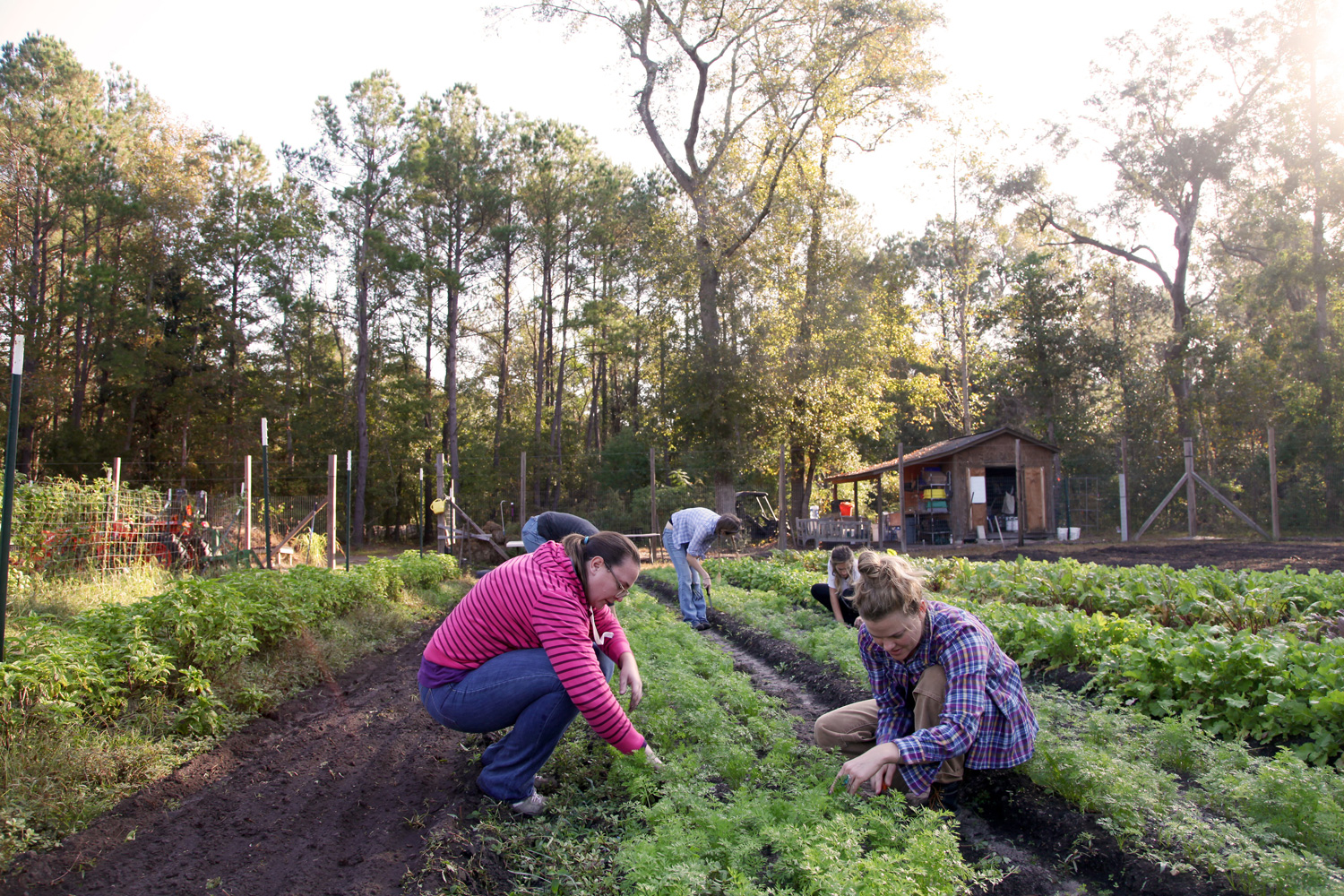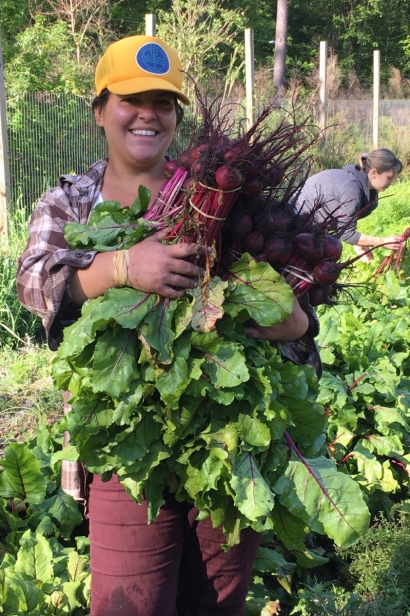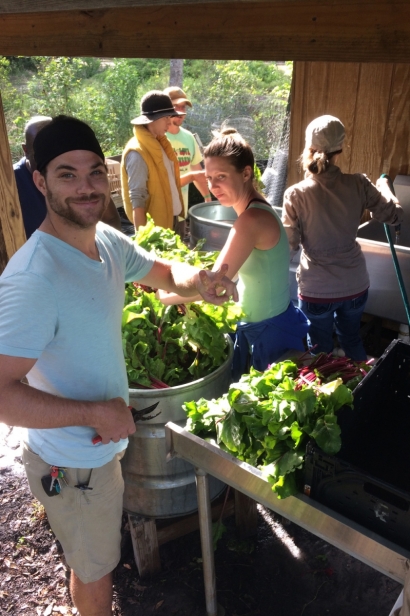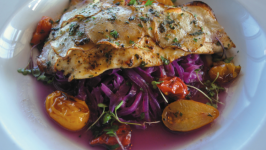Restaurants Across Charleston Incorporate Rooftop Gardens
Raise the Roof!
Diners mingling on the rooftop of Harold’s Cabin at the corner of Congress and President streets often don’t realize that they’re standing amid the restaurant’s own produce supply. Cooks intermittently emerge from the kitchen to retrieve fresh-as-can-be ingredients growing in the rooftop garden.
Everything from veggies like kale and shisito peppers to herbs, including rosemary and basil, can be found in large, round planters and elevated garden beds.
“Having the garden up there instead of the standard decorative flowers gets people more engaged when they’re having cocktails on the roof,” says Harold’s Cabin’s executive chef Trevor Smith. “People see myself or one of the cooks up there actually picking stuff, and they think it’s great when we can show them where the kale in their dish actually comes from.”
Not only is the garden an excellent selling point for customers, but it also helps the restaurant cut costs while providing extremely fresh ingredients.
“We try to be as self-reliant as possible,” Smith says. “We know with the limited space we wouldn’t be able to rely solely on produce from the rooftop, but this past winter and heading into the spring, we’ve been able to serve our popular beet salad entirely with arugula from the roof.”
Instead of shipping in lesser-quality produce from long distances, Smith tries to incorporate the local flavor of ingredients that flourish in Charleston’s climate. Hints of the rooftop garden are peppered throughout the daily menu—fresh herbs sprinkled over fries, house-grown veggies decorating the forager board, crisp kale topping a mushroom sandwich.
While the notion of a restaurant garden is refreshing, Harold’s Cabin is far from the first eatery to exercise their green thumb. Some say McCrady’s Tavern may have been the first Charleston restaurant to experiment with growing produce when chef Sean Brock established a rooftop garden and even started a larger garden on John’s Island that grew produce for the restaurant. To this day, McCrady’s continues to source much of the menu’s ingredients from the rooftop as well as local farmers and growers.
Outside the city, Middleton Place Restaurant takes advantage of its extra land by incorporating the crops grown on the property’s organic farm and gardens. Chef Chris Lukic, who also doubles as the food and beverage director, integrates these fresh ingredients into the menu based on what’s in season.
Jacques Larson, executive chef of the Wild Olive on John’s Island and Obstinate Daughter on Sullivan's Island, also sees the value of an on-site garden.
“I think anything that can improve the quality of what you’re serving is definitely worth looking into,” says Larson. “And, there’s always a lot of pride that comes along with growing your own product.”
Working with Ables Landscapes, Larson and his team tend to small gardens at both restaurants. The patio and flower boxes at Obstinate Daughter are brimming with herbs like basil, mint and red bay leaves, a plant native to Charleston, while Wild Olive boasts olive trees and herbs including sage and rosemary.
The gardens are meant to be part of the ambiance, particularly the flowerbeds on Obstinate Daughter’s patio, as well as supply the restaurant with fresher, cheaper produce.
“It can’t get much fresher than going outside in the morning and clipping the herbs yourself,” says Larson. “People notice the smell of just-chopped basil, and they can taste that high quality in the dishes, too.”
While the homegrown ingredients certainly make an impact on the food, the garden itself offers something else to the restaurants’ employees.
“What I like about doing the garden is the comradery it breeds with the staff,” says Larson. “We’re indoors so much as cooks, I think a lot of the staff members just enjoy being outside, maintaining the garden and serving it because it serves us so well.”








